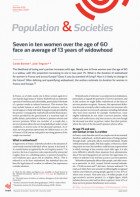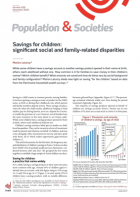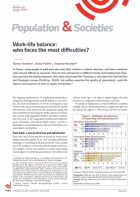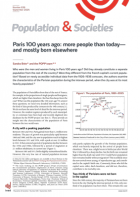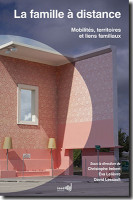
La famille à distance
Mobilités, territoire et liens familiaux
Collection : Questions de populations
n° 2, 2018, 376 pages
General introduction
Part I. Multiple perspectives on families and their “territory”
1. How many people in France live in more than one residence on a regular basis? Laurent Toulemon
2. The diversity of family multiple residence practices, Christophe Imbert
3. Transnational families in research on migration, Cédric Audebert, Thomas Lacroix, Emmanuel Ma Mung
4. Families separated by distance: a spatial resource in migration and an impetus in transnational flows, Célio Sierra-Paycha
5. New family spatial patterns in the changing metropolis of Bogota (Columbia), Françoise Dureau, Guillaume Le Roux
Part II. Spatial patterns, distance and social ties
6. Families separated by distance? Describing and measuring family territory, Éva Lelièvre and Romain Damian
7. Long-distance couplehood: prevalence and characteristics, Arnaud Régnier-Loillier
8. Should distance be integrated into the definition of family structures to improve our grasp of solidarity needs? Loïc Trabut
9. Migration dynamics and changes in family structure as they affect spatial patterns of West African families living in France, David Lessault, Guillaume Le Roux
10. Family places and intergenerational solidarity in the French Antilles and Reunion, Carole Beaugendre, Didier Breton, Claude Valentin-Marie
Part III. When geographical distance plays a role in defining family functioning
11. Is distance more often a feature of same-sex [rather than different-sex] conjugal and family relations? Wilfried Rault
12. Sibling groups in multi-located Senegalese families, Hamidou Dia
13. Mobile/immobile: what are the benefits of teleworking for families where one parent commutes long-distance on a weekly or longer basis? Nathalie Ortar
14. Practices and representations of family discontinuity among flight personnel, Anne Lambert
15. Ageing in the country of immigration: women immigrants aged 55 and over upon the departure of their grown children, Rémi Gallou
Conclusion: Remaining a family despite distance, Christophe Imbert, Éva Lelièvre, David Lessault
Appendix, Presentation of sources
[Families separated by geographical distance]
Do recent changes in commuting, workspaces and lifestyles have an impact on the family and its constitutive ties? How can we define today’s geographically fragmented families?
Mobility and migration have dispersed individuals and complicated the matter of choosing where to settle. Family network proximity and accessibility are crucial considerations in making those choices. How can we describe and understand the functioning of families whose members are geographically dispersed?
The family unit is more than a household; it may be defined as a group whose different members no longer necessarily live together under the same roof, at least not continuously. The family unit now extends across a “territory” of varied contours. The particular dynamics of distance, proximity, and administrative and international borders all affect family relations.
Multiple residence—defined here as living under several different roofs, migrants maintaining ties with the family they left behind, grown children’s relations with aged parents, couples living apart together, teleworking, and mobility in particular professional groups (e.g., flight personnel) are all manifestations of how families function when separated by geographical distance. In adapting to new constraints, those families invent new forms of solidarity.
Christophe Imbert is a geography professor at the University of Rouen and member of its “Identité et Différenciation de l’Espace, de l’Environnement et des Sociétés” research laboratory (UMR 6266 DES). He specializes in the dynamics of settlement as related to time-space forms of mobility and lifestyle changes.
Éva Lelièvre is a senior researcher at INED. Her recent research concerns the concept of the family network and the territory it occupies and how to model these phenomena; and individual trajectory and living space analysis methods. Together with Christophe Imbert and David Lessault, she coordinated the Agence Nationale de Recherche “Des Lieux aux Liens” [From places to ties] (LILI) research project, which used data from the 2011 Familles et Logements [Families and Housing] survey.
David Lessault is a geographer and researcher at the CNRS currently working at the Migrinter research laboratory (UMR 7301, University of Poitiers). His research concerns spatial mobility as related to changes in territorial and family dynamics. He is once again working in partnership with INED after participating in surveys on Senegalese migration (MAFE 2006-2010).


